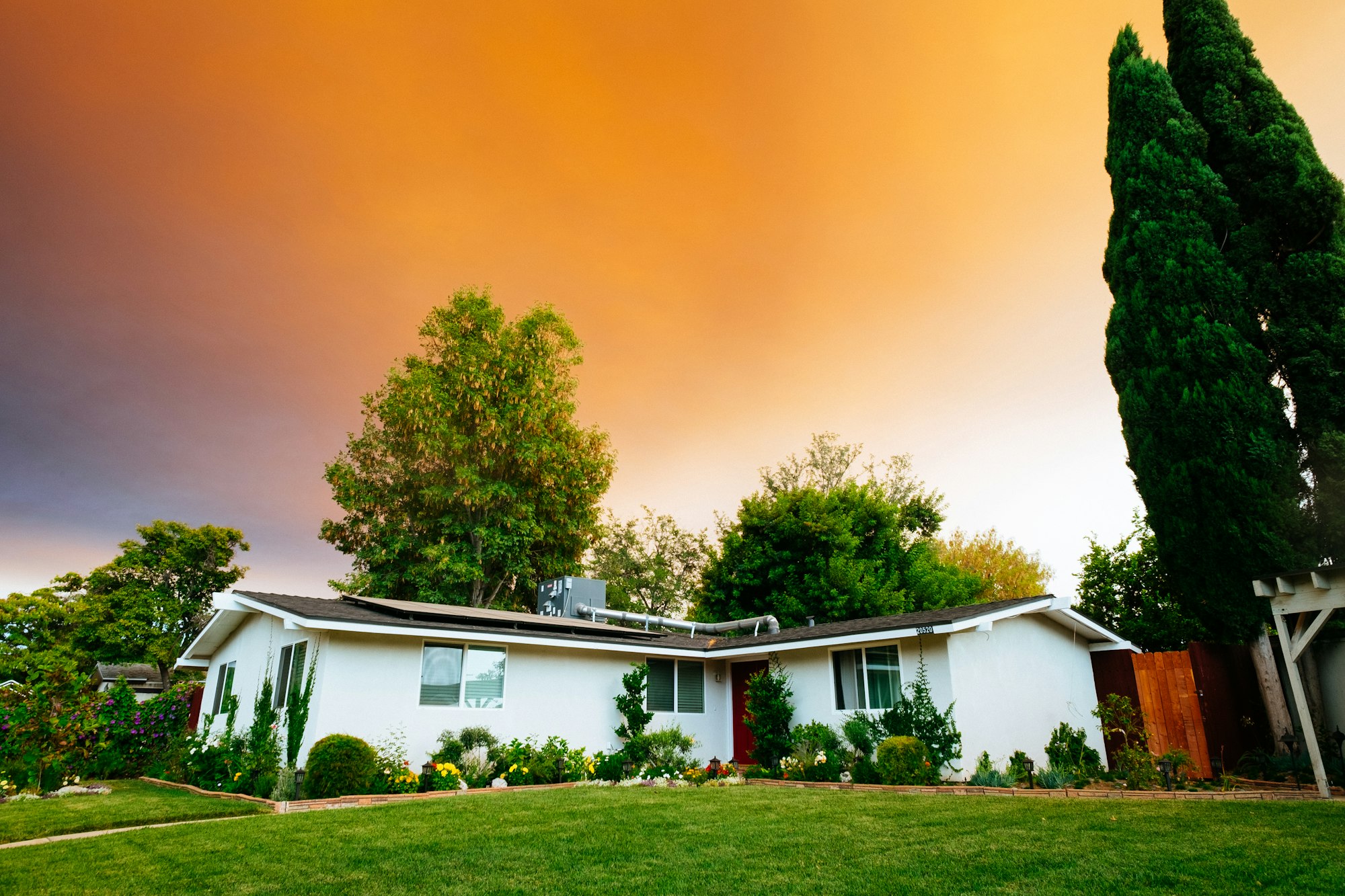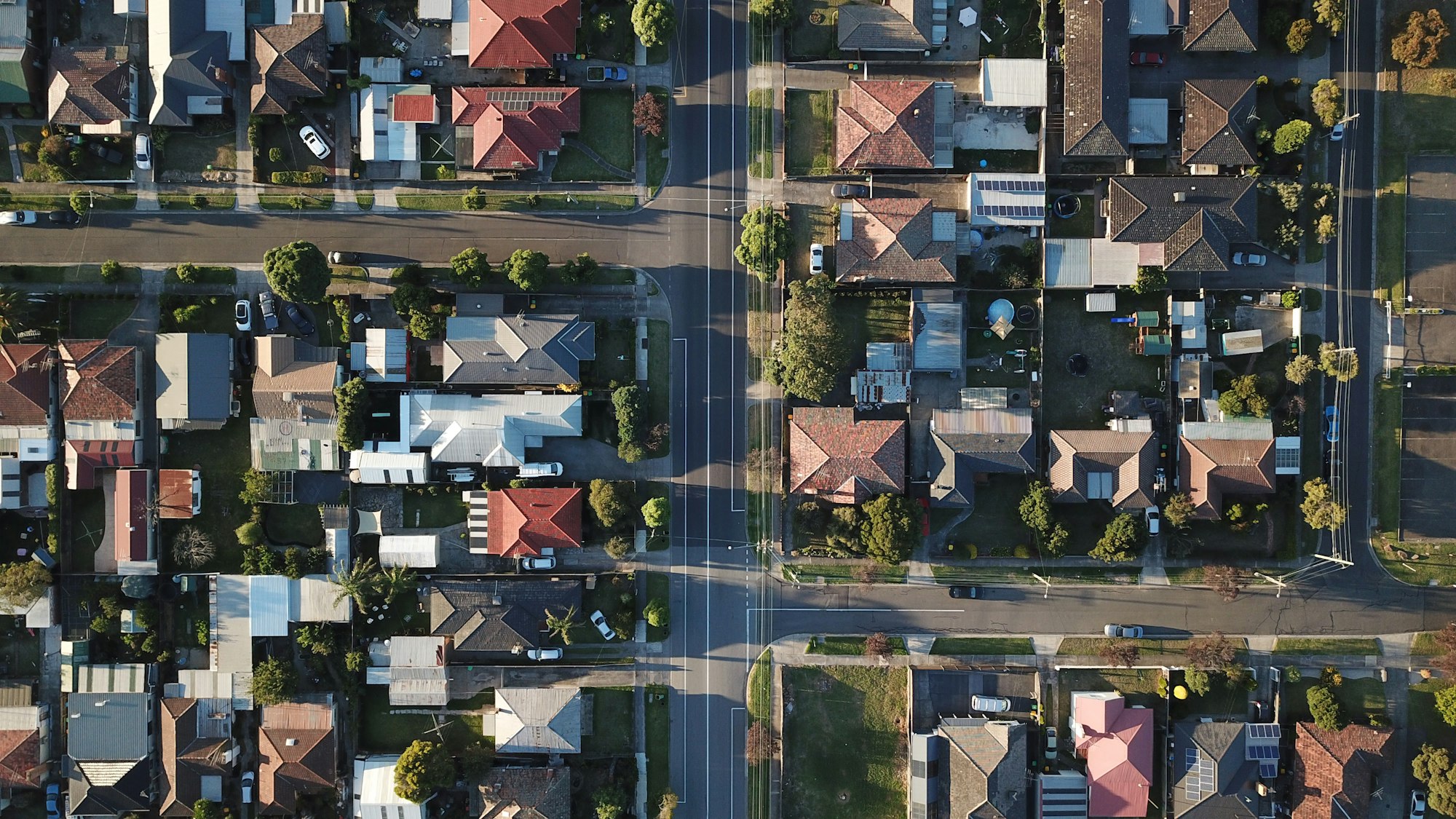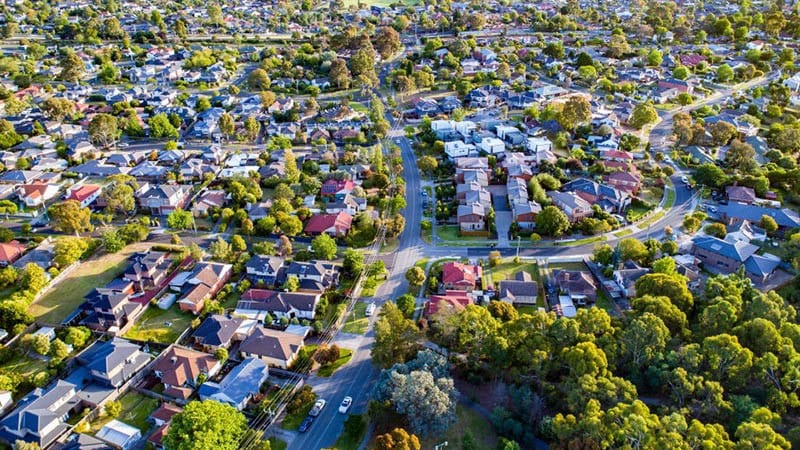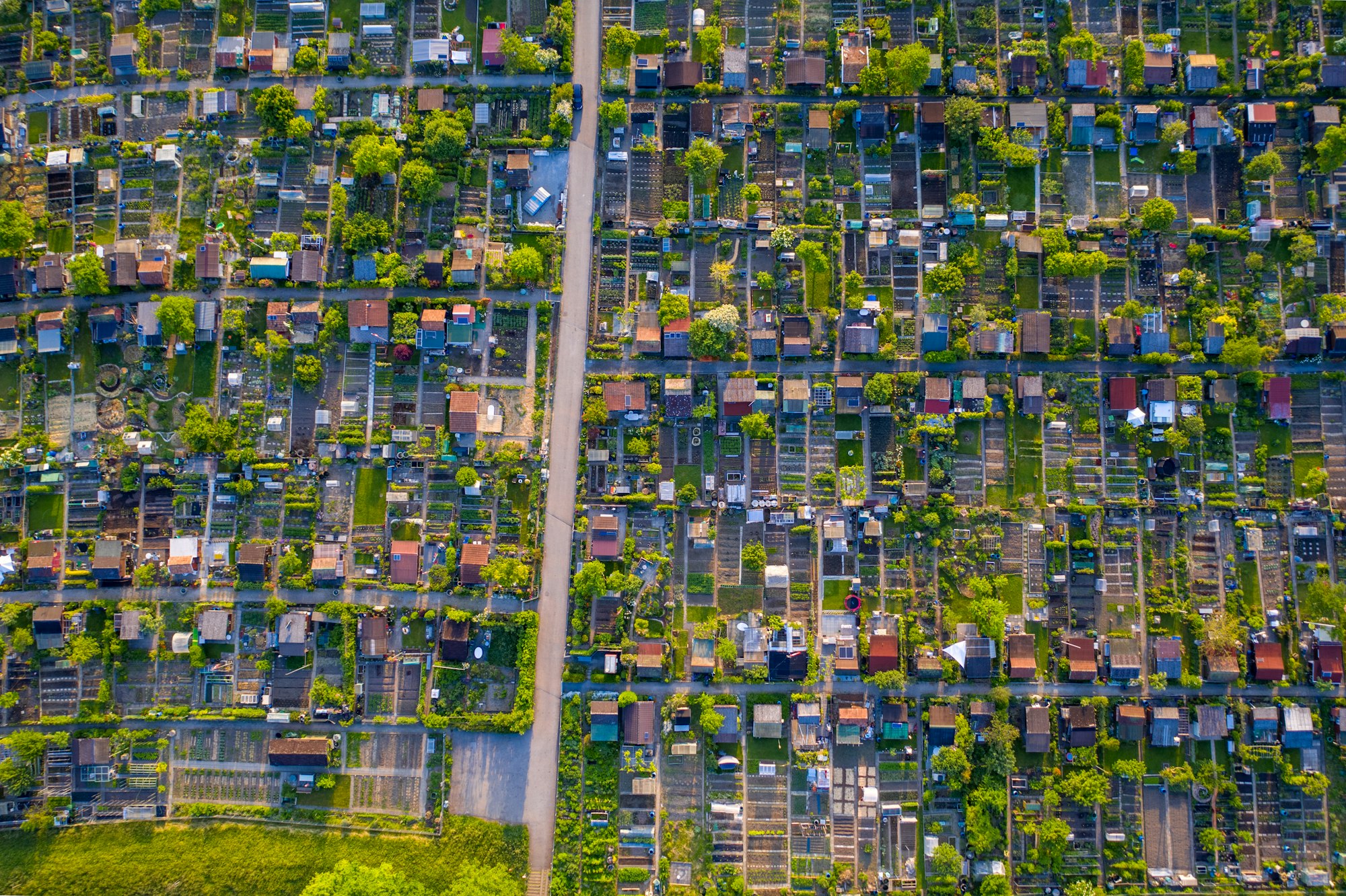Australia’s Housing Mess—What’s Really Going On?
Australia’s housing market isn’t just expensive—it’s become downright unreachable for many everyday Australians. Prices have been rising faster than incomes for years, and now, even with a decent wage, the dream of owning a home is slipping out of reach for more people than ever.
By the end of 2024, the national dwelling price-to-income ratio hit 8.0, well above the long-term average of 6.7. Translation? Homes are getting more expensive, and paychecks aren’t keeping up. That means more people are locked out of the market, no matter how hard they work.
Both major political parties have rolled out their usual “solutions”—Labor’s $6.3 billion shared equity scheme and a vague promise to build 1.2 million homes, while the Coalition wants first-home buyers to dip into their super and claim tax deductions on mortgage interest. But let’s be honest—most of these policies just pump up demand and keep prices high. They don’t do much (if anything) to fix the real issue: not enough homes being built, especially ones people can actually afford.
Most promoted measures primarily address demand-side factors and may inadvertently contribute to further price inflation without significantly increasing housing supply.
And that shortage isn’t going away. The Urban Development Institute of Australia (UDIA) predicts we’ll be short 400,000 homes across our capital cities by 2029. That’s not a gap—it’s a chasm.
What’s causing it? Well, it’s a mix of things: trade shortages, sky-high material costs, endless red tape, and land developers sitting on sites instead of building on them.
What we need is a proper plan to fix supply. That means cutting the fluff, ditching the short-term political sugar hits, and creating a real environment for building quality, affordable homes—fast.
This includes fostering innovation in construction methods, streamlining planning processes, and investing in infrastructure to support new developments. By creating an environment conducive to innovation and collaboration, Australia can work towards a more accessible and sustainable housing market for all.
The Political Problem: When the People Making the Rules Benefit from the Broken System
Let’s not pretend this housing mess is just a planning or supply chain issue. Part of the problem lies right at the top—with the people making the rules.
Here’s the uncomfortable truth: a large chunk of our federal politicians own multiple investment properties. In fact, nearly 40% of them (and their families) own three or more properties. That’s a whole lot of real estate for people meant to be representing Australians struggling to afford even one.
- Approximately 44% of federal politicians own at least one investment property, compared to about 15% of the general Australian population.
- Nearly 40% of Members of Parliament (MPs) and their families own three or more properties.
- Some MPs have extensive property portfolios; for instance, Liberal MP Karen Andrews and Labor MP Michelle Ananda-Rajah each own seven properties.
These figures suggest that many policymakers are significantly invested in the property market, which may influence their perspectives on housing policies.
This raises a fair question—how can you expect genuine reform when the people in charge personally benefit from the way things are?
When policy and property mix, trust takes a hit
When politicians stand to gain from rising house prices, it’s not hard to see why bold changes rarely get made. Any policy that might actually bring prices down—like winding back negative gearing or taxing capital gains properly—is met with deafening silence or endless stalling. Because let’s face it: cutting into your own profits isn’t exactly a vote-winner in Parliament.
And while they tinker with schemes to make it easier to borrow or use your super for a deposit, the bigger issues—supply, construction innovation, affordability—barely get a look-in.
Renters? What renters?
And don’t even start on renters. Millions of Australians rent, but you'd never guess that from most policy announcements. Renters are struggling with record-high prices and insecurity, but they barely rate a mention. They're not just being left behind—they're being ignored altogether.
Who are they really working for?
Politicians are supposed to be of the people and for the people—but when their values and interests are out of step with the public, what we usually get is self-serving policy dressed up as public good. And when they’re not being transparent about their own property portfolios, is it any wonder the public doesn’t trust them to fix the problem?
What Other Countries Got Right — And Why We Should Be Paying Attention
Here’s a thought: maybe instead of coming up with half-baked schemes that barely scratch the surface, we look at places that have actually made housing affordable—and learn something from them rather than waste time and repeat mistakes already learnt and done.
Because despite what we’re told, it is possible to build good, affordable homes. It just takes long-term thinking, strong leadership, and a willingness to do things differently. Let's look at two countries that didn’t just talk about solving the problem—they actually did something about it.
Vienna, Austria – Housing is a Right, Not an Investment Strategy
Vienna has been doing affordable housing for over 100 years—and doing it well. Around 60% of the city’s population lives in some form of social or publicly subsidised housing. That’s not a typo.
They’ve made a deliberate choice: housing is a human right, not a commodity to flip for profit. Here's what makes it work:
- Mixed communities: People of all income levels live side by side—no ghettos, no stigma.
- Steady funding: A small housing tax (split between employers and workers) funds construction and maintenance.
- Good design: These aren't soulless concrete boxes. Vienna builds with pride and purpose—good architecture, green spaces, places people actually want to live in.
The result? Affordable rents, low homelessness, strong communities. Imagine that.
Singapore – Build It, Own It, Live Well
Singapore’s Housing and Development Board (HDB) has turned the island nation into a public housing powerhouse. Over 80% of Singaporeans live in HDB homes, and most own them. Yep, own.
Here’s why it works:
- Government builds the homes and sells them to citizens with major support—low prices, long leases, and financing help.
- Towns are fully planned with schools, shops, transport, and parks built in from day one.
- Cultural cohesion is part of the design. The government ensures a healthy mix of ethnic groups in each building to encourage harmony and avoid segregation.
It’s not perfect, but it works—and it works on a massive scale.
So what’s our excuse?
Both Vienna and Singapore have shown what can be done when governments take responsibility, build properly, and treat housing like essential infrastructure—not just a market to be “stimulated.”
In Australia, we tinker. We hand out cash, inflate prices, and act surprised when nothing improves.
What If We Built a Housing Silicon Valley—Right Here in Australia?
It’s time to think bigger. No more “one scheme at a time” thinking. If we’re serious about fixing this housing crisis—not just patching it—we need to build something new from the ground up: a dedicated, nationwide ecosystem built for one purpose—affordable housing.
Think about what Silicon Valley did for tech. Now imagine that, but for housing.
We need a place (or places) where startups, builders, designers, engineers, manufacturers, researchers, investors, and even policymakers can work together to fast-track new ways to build homes. Faster, smarter, cheaper, better homes. Homes people can actually afford to live in.
Step one: Build the engine room—a Housing Innovation Hub
This isn’t just a website and a few consultants. We're talking about physical spaces across the country where people with ideas can access funding, testing, prototyping, and fast-track approvals. Think prefab factories, modular construction test beds, R&D labs, innovation grants, and pilot sites.
NSW did it with the Sydney Startup Hub—and it’s worked. Now we need one tailored for housing.
Step two: Get the government in the game
This won’t work if the government just watches from the sidelines. We need them to:
- Back innovation with real money—not just press releases
- Open up land and approvals for trial projects
- Offer incentives to investors and builders who are willing to take risks and try new things
- Work with the private sector, not against it
Public-private partnerships can do a lot when there's trust and purpose behind them. But right now, that’s missing.
Step three: Bring in the builders of the future
Modern construction methods—like prefabrication and 3D printing—can cut build times and costs by half or more. But to use them, we need people trained in them. That means education, training, and up-skilling on a national level. We need to rebuild the workforce to build the future.
Australia has the brains. It has the resources. What’s missing is the political will and the environment for people to actually do the work.
If they knew anything about how to do this they would have done it. They don't, they wont, they will cling to the past until they retire, go broke or get kicked out of the industry. They would rather wine and dine in corporate boxes at sporting events, do coke, fuck around with "not their partner" and tell you how rich they are or which brand of car they just bought.
What Needs to Happen for This to Actually Work
You can’t just throw a few million bucks at a prefab factory and hope it fixes housing. If we’re going to build a real housing innovation ecosystem, we need the right foundations in place. No shortcuts. No gimmicks. Just smart, deliberate moves that actually support progress.
Here’s what has to be in the mix:
1. Government Support That’s Actually Supportive
We don’t need more pilot programs that disappear after one budget cycle. We need long-term backing that makes it easier—not harder—to innovate.
That means:
- Fixing the planning and approvals process so it doesn't kill good ideas before they get off the ground.
- Giving real tax incentives and grants to those willing to do things differently—especially on the supply side.
- Making public land available for affordable housing, instead of selling it off to the highest bidder.
The Housing Australia Future Fund and National Housing Infrastructure Facility are a start, but right now they’re a drop in the ocean. We need a pipeline, not a puddle.
2. Funding That Doesn’t Dry Up After Seed Round
Here’s the brutal truth: most Aussie startups run out of money long before they hit scale. Even if they land a bit of angel funding, there's rarely enough follow-on capital—Series A, B, or institutional funding—to keep things moving.
That’s how we lose talent to the US. We need to keep capital flowing at every stage:
- Public-private partnerships to share risk and reward
- Social impact investors who care about more than profit
- Superannuation funds that are hungry for long-term, stable returns (sound familiar, housing industry?)
It’s not just about writing cheques—it’s about backing a future we want to live in.
3. Research, Prototyping, and Testing That Doesn’t Live in a Drawer
Ideas are great, but unless we build them, test them, and refine them—they're just whiteboard fluff.
We need:
- Dedicated housing innovation hubs (see Section 4)
- Proper links between universities, TAFEs, and industry
- Government policies that make it easy to run pilot programs at scale and fast-track approvals for proven systems
Let’s stop reinventing the wheel every time someone wants to build a better wall system or trial a new prefab design.
4. People Who Know How to Use the Tools
You can have the best factory in the world, but it’s useless if no one knows how to run it. We need to train the next wave of builders, installers, and project managers in modern construction methods.
This means:
- National vocational training programs
- Trade apprenticeships updated for modular, prefab, and MMC (modern methods of construction)
- Industry-backed certifications for innovation, quality, and sustainability
We can’t solve a modern problem with an outdated skillset.
Talent, Ideas, and Ownership—Keep It Here, Build It Here
Australia’s got no shortage of bright minds. But for decades, those minds have had to pack their bags and head overseas if they wanted to build something big. Why? Because we made it too hard for them to stay.
Back in the day, if you were a startup founder, you almost had no choice but to head for Silicon Valley. Here, early-stage funding was scarce, and follow-on funding? Forget it. Series A, B, and institutional capital just weren’t available. You’d hit a wall—and the only path forward was on a Qantas flight to San Francisco.
The result? Our best thinkers left. They took their ideas, their energy, and their IP with them. And now, technology and software services are one of America’s biggest exports. It’s a borderless economy—and we gave it away.
It’s time to pull our finger out.
We need to stop the brain drain
To attract and keep talent in housing innovation, we need:
- A real funding ecosystem that doesn’t leave people stranded after seed round
- A startup-friendly environment where you can take risks and still eat
- Support systems and mentorship to help new founders scale without selling out
People don’t leave because they want to—they leave because staying isn’t viable.
Keep the IP here, too
When Aussie founders succeed, we should all benefit. But too often, the IP ends up overseas, commercialised elsewhere, with the value captured by someone else.
Here’s how we fix that:
- Support homegrown companies with funding, land access, and fast-track approvals
- Write smart research agreements between universities and industry to keep ownership fair and local
- Create incentives for commercialising IP here, not offshore
If we don’t act, we’ll keep watching our best ideas turn into someone else’s billion-dollar export industry.
What Happens If We Just Keep Kicking the Can Down the Road?
I'll spell it out: if we keep doing what we’re doing—throwing band-aids at a broken system—we’re not just failing to solve the problem. We’re actively making it worse.
Housing supply is already miles behind where it needs to be. And it’s not slowing down. More people are renting for longer, fewer can afford to buy, and homelessness is creeping into the lives of people who never thought they’d be at risk.
But here’s the real kicker: if we don’t act now, we’re not just losing homes—we’re losing industries, innovation, and entire generations of talent.
And while we stall—the vultures are circling
While governments spin their wheels, others are moving in. Private equity firms, international investors, even international super funds—they’re lining up to buy big slices of Australia’s housing future. Why? Because they see what we refuse to act on: housing is a goldmine when supply is tight and policy is weak.
If we don’t build the homes ourselves, they will—and we’ll rent them back from them at a premium. Build to Rent anyone? Look at who's pushing this. Where do the profits go?
And don’t expect the profits to stick around either. Much of it will be funneled offshore, dodging tax, dodging responsibility—while we foot the bill for roads, schools, hospitals, and the social fallout of a system designed for someone else’s balance sheet.
Do we want to be a country that builds for its people—or rents from whoever’s holding the deeds?
We've been here before—and we blew it
Remember how we let all our manufacturing jobs go offshore? Same story, different decade. Except this time, we have a chance to get ahead. We could rebuild parts of the local manufacturing sector around affordable housing—panel systems, prefab construction, modular factories. But without vision (and government action), it’ll be another opportunity lost.
And we’ll still be sitting in parliamentary inquiries in 2035 asking, “Why didn’t we act sooner?”
The cost of doing nothing isn’t zero—it’s huge
Every month we delay, more families get priced out, more renters face eviction, and more of the next generation lose hope of ever owning a home.
And when people feel like there’s no point trying, when the game feels rigged, things start to crack socially and economically. People give up. They stop investing in their communities. And that carries a far higher cost than just building some homes.
We’re already seeing it—young people checking out of the political system, voter distrust at record highs, mental health issues rising. It all links back to the same feeling: the system isn’t working for me.
We’ve starved our own innovators—and they left
For years, Aussie startups were stuck in a loop: get a little bit of early support from an angel investor, then hit a brick wall when it came time to scale. Follow-on funding—Series A, B, C—was practically non-existent. And without that support, many founders did what they had to do: packed up and headed to Silicon Valley.
It wasn’t because they wanted to leave. It’s because Australia just didn’t back them when it counted. The local venture capital scene was tiny, cautious, and allergic to risk. Meanwhile, the U.S. was throwing open the doors and saying, “Come build something big.”
Adeo Ressi, a major name in the global startup space, once pointed out that Australia’s lack of risk appetite was basically pushing our smartest minds out the door. And he was right. We didn’t just lose ideas—we lost the industries they would’ve built here, the jobs they would’ve created, and the taxes they would’ve paid.
Back in the early 2000s, Australia had a moment. We jumped on the biotech boom, built up some momentum, and started backing homegrown research and innovation. There was real excitement. Companies were getting listed. Capital was flowing. For a brief window, it looked like Australia was serious about turning research into industries.
But then? Crickets.
Once that wave settled, we never really built on it. We didn’t follow through with broader support for other sectors. Aside from a few standout success stories, we’ve had no national push to foster the next big thing—whether in advanced manufacturing, clean tech, or housing innovation.
It’s like we dipped our toe in, got spooked by the cold, and walked away.
The lesson? If you don’t build systems that last—if you don’t keep investing in the next wave—you fall behind. And that’s exactly where we are now.
So What Do We Actually Do? Here's the Blueprint.
If you’ve made it this far, you probably don’t need convincing that the current approach isn’t working. The question now is: what would it actually take to turn this around?
We’re not talking about another advisory panel, another election promise, or another meaningless ribbon-cutting event. We’re talking about a real plan—a national, long-term strategy that puts innovation, affordability, and housing security at the centre of Australia’s future.
Here’s what it needs to look like.
1. Build a Startup Ecosystem for Housing—From the Ground Up
Just like Silicon Valley wasn’t built on one product, this can’t be built on one prefab factory. We need a whole ecosystem where housing innovators can experiment, fail, learn, and scale—without needing to leave the country.
That means:
- Dedicated housing innovation hubs in every state
- Access to land for pilot builds and scalable rollout
- Policy reform to clear the path instead of clogging it
- A pipeline of funding that flows from startup to scale-up
2. Stop the Brain Drain (Before We Repeat the Same Mistake)
In the early 2000s, we jumped on the biotech wave. There was a moment of hope, momentum, and national pride. But what followed? Almost nothing—just a few outliers and a lot of lost potential. We didn’t build the ecosystem to keep it going. And we’re doing it again.
Our best minds in tech left for Silicon Valley because Australia didn’t back them past the first funding round. In housing, it’s shaping up the same way: great ideas, nowhere to grow them.
We need to:
- Keep funding consistent through all startup stages
- Create clear IP pathways that keep ideas and profits in Australia
- Train and retain the next generation of tradies, engineers, and designers with the skills to build faster, better, and smarter
3. Make Housing a National Mission
We don’t need a new department—we need a national mission. One that cuts across planning, housing, education, industry, and treasury.
Just like we took on big nation-building infrastructure in the past—telecoms, power grids, Snowy Hydro—we now need to treat housing innovation as a core national priority.
It’s not just about building homes. It’s about:
- Creating jobs
- Rebuilding manufacturing
- Restoring trust in government
- Making the Australian dream possible again
And we don’t have the luxury of waiting 10 years. We need to start yesterday.
We need a national strategy that brings startups, builders, manufacturers, and government to the same table—with one goal: homes that everyone can afford.
👉️ A strategy that starts now and stays the course, no matter which party is in power.
Conclusion: It’s Time to Stop Talking and Start Building
Let’s be honest—Australia’s housing crisis didn’t happen overnight, its taken years and both parties to turn it into today's cluster fuck and it’s not going to be fixed with more half-baked schemes or slick campaign slogans.
We’ve had years of policy inertia, short-term thinking, and self-interest getting in the way of real solutions. Meanwhile, the supply gap has ballooned, prices have surged, and entire generations feel like they’ve been priced out for good.
But here’s the thing: it doesn’t have to stay this way.
We’ve got the brains, the tools, and the blueprint. We’ve even got the demand—millions of Australians who just want a fair go and a place to call their own. What we don’t have is a coordinated, courageous plan to actually make it happen.
That part’s still missing. And that’s where we come in.
This article isn’t just a rant—it’s a roadmap.
It’s a call for:
- Builders and tradies to demand better systems and smarter tools.
- Policymakers to stop protecting their own portfolios and start protecting the next generation.
- Governments to foster real innovation—not just fund the usual suspects.
- Citizens to hold power to account and push for real, lasting change.
Because the way we build housing says everything about the kind of country we want to be.
Are we a nation that only looks after those who got in early? Or are we a place that believes everyone deserves a shot at security, dignity, and a decent home?
FAQS
1. What is the Housing Australia Future Fund (HAFF)?
It’s a $10 billion government fund set up to finance the construction of social and affordable housing. The goal is to build 30,000 homes over five years—but with our current backlog, that’s just a drop in the ocean. $10bn/30,000 = $333,333 per house. Modscape (for example) starts pricing at $500,000 per house and is positioning itself as "the Apple" of housing. They are not interested in affordable, NDIS or social housing - only turnover.
2. Can 3D printing really help with affordable housing?
Yes—and it’s already happening. 3D-printed homes are faster to build and cheaper to produce. One project in Melbourne is putting up a multistorey home in just five weeks. The tech’s real—we just need the will to roll it out.
3. What are prefabricated and modular homes, and why do they matter?
They’re homes built in sections in a factory and assembled on-site. It’s faster, less wasteful, and way more efficient than traditional building. Perfect for scaling up housing quickly—if we actually invest in it properly.
4. Why do so many Australian startups move overseas?
Because they hit a funding wall. Seed money’s hard enough to get here, and follow-on funding (Series A, B, C) is almost non-existent. So, great Aussie ideas end up commercialised in the U.S. instead of here at home.
5. What do public-private partnerships do in housing?
They combine government support with private sector investment to get things built—faster and smarter. When done right, they help share the risk and get affordable housing projects off the ground at scale.
6. How does the “Help to Buy” scheme work?
The government chips in up to 40% of the purchase price for eligible buyers, so you only need a 2–5% deposit and a smaller loan. Sounds good on paper, but it still doesn’t fix the fact that homes are too expensive to begin with.
7. What’s the National Housing Infrastructure Facility (NHIF)?
It’s funding for the stuff that makes housing possible—roads, utilities, and infrastructure that supports new developments. Think of it as the behind-the-scenes funding that helps unlock buildable land.
8. Could innovative financing help fix this mess?
Absolutely. Community land trusts, social impact investing, and shared equity models are all on the table. But they need government backing and regulatory support to take off.
9. Why can’t we hit our housing targets?
Because we’ve got labour shortages, material delays, broken planning systems, and not enough innovation in how we build. The target of 1.2 million new homes by 2029 looks shaky at best without serious change.
10. Is modular housing really sustainable?
Yes. It reduces construction waste, energy use, and build time. Plus, it’s easier to design for energy efficiency. It’s not just faster—it’s greener. But it needs scale, not just one-off pilot projects.
Further Reading


























